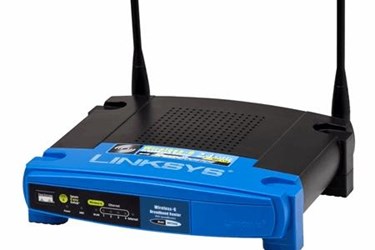Wi-Fi-Based Sensing: The Myths, The Facts, The Opportunities!
By Ed Biller

Last year, Laser Interferometer Gravitational-Wave Observatory (LIGO) researchers confirmed Albert Einstein’s theory about the presence of gravitational waves. Using the most stable optical system ever built, they measured a gravitational wave's low-frequency effect through distance changes of about 10-18 m, about 1/1,000 the diameter of a proton. Now, researchers are applying that same principle — using ultrasensitive equipment to capture minute phenomena — to Wi-Fi.
We all know that a wireless router emits Wi-Fi signals and receives information back about those signals in real-time, making adjustments on the fly to better communicate with the devices accessing the signal. But when something moves within that wireless signal’s coverage, there is a slight change in the signal’s frequency, known as the Doppler frequency shift. While these shifts are very small — often just a few hertz within Wi-Fi signals operating at a 20 MHz bandwidth — researchers and entrepreneurs have developed both the technology to detect the shifts and the algorithms to interpret their meaning.
University of Washington computer scientists leveraged this knowledge in 2013 to create WiSee, gesture-recognition technology they envisioned being used to control entire smart homes through simple motions (e.g., waves of the hand). No additional sensors, remotes, RFID implants, or wearables were necessary, and the user did not have to be in the same room as the receiver.
That same year, Massachusetts Institute of Technology (MIT) researchers discovered that they could track people’s movements through walls by analyzing the reflected Wi-Fi signals.
Recently, there has been a reemergence of interest — and skepticism and conspiracy theories —surrounding this Wi-Fi-based sensing. Last month, computer science researchers at Northwestern Polytechnical University in China published a paper detailing a system that, reading changes in Wi-Fi signals, can identify humans as they walk through a door with about 90 percent accuracy. However, this system must first learn the subjects’ body shapes to properly identify them later.
More recent MIT efforts have resulted in Wi-Fi technologies that can track breathing and heartbeat, as well as a system being pitched as a home monitor — designed to keep tabs on the well-being of elderly or developmentally disabled family members. Similarly, an assistant professor of electrical and computer engineering at Michigan State University’s College of Engineering has received a two-year, $171,600 NSF grant to continue developing his adaptation of Wi-Fi as a sensing technology. Like the MIT researchers, he is attempting to create a system that can alert family or caregivers of abnormal events in a loved one’s home, minus the intrusiveness of wearable devices or cameras.
In 2014, technology was developed by a Berkeley Ph.D. student-led team that can “hear” what someone is saying by analyzing the effect of their mouth’s movements on the Wi-Fi signal. In the same vein, a Michigan State University Ph.D. student led the research behind a system (introduced last year) that can track keystrokes by – you guessed it – analyzing Doppler frequency shift. Both systems have prompted a number of reactionary articles fearful of Wi-Fi routers spying on us.
However, most of those articles fail to account for the fact that these experiments were conducted under controlled conditions, by willing participants. Add more voices or unnecessary movements to the equation, and the accuracy of the results suffers considerably. Kamran Ali, who led the MSU research, told The Atlantic that these limitations mean such technology is “not a big privacy concern for now.”
Still, developers would be remiss if they did not pursue such applications. It’s foolhardy to believe that others aren’t striving to perfect what could be groundbreaking surveillance technology. Routers themselves could be embedded with movement-tracking receivers, eliminating the need for third-party devices. More advanced receivers will be developed, capable of detecting even subtler shifts in frequency and more effectively ignoring interference (RF engineers are rather adept at filtering out noise), and researchers will develop algorithms that more accurately interpret those signal disturbances.
While acknowledging that military and defense applications will be vetted for just about any new technology, I’d prefer to muse over the consumer-driven applications of Wi-Fi sensing, such as the aforementioned researchers’ efforts to create a home monitoring system. I’m also still waiting for a Wi-Fi-based gesture-recognition system that can control the lights in my house, or adjust the volume on my TV.
Consider, also, quality-of-life solutions. A Wi-Fi sensing receiver could be trained to accurately interpret sign language, allowing for new possibilities in communication —picture a police station or emergency room where no sign language interpreter is present and fast, effective communication is vital. Continuing with the idea of medical care, touchless sensors are used to monitor patients whose traumatic injury or condition prevents physical contact (due to pain or risk of infection). How about a Wi-Fi-based system that lets them express their needs to caregivers outside the room with a simple wave or a blink of the eye?
What other applications can Wi-Fi-based sensing technology improve or enable? What additional technical barriers exist? I’m eager to hear your thoughts in the Comments section below.
